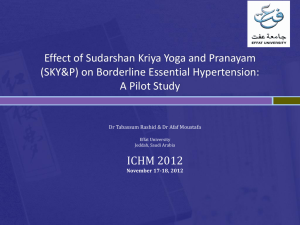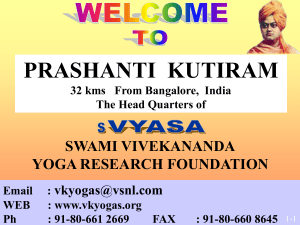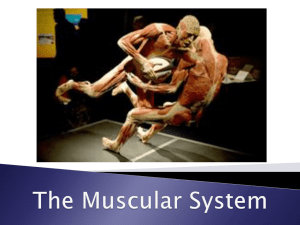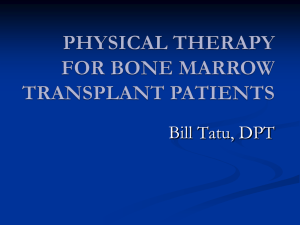Differences Between Yogic Exercises and Physical Culture
advertisement
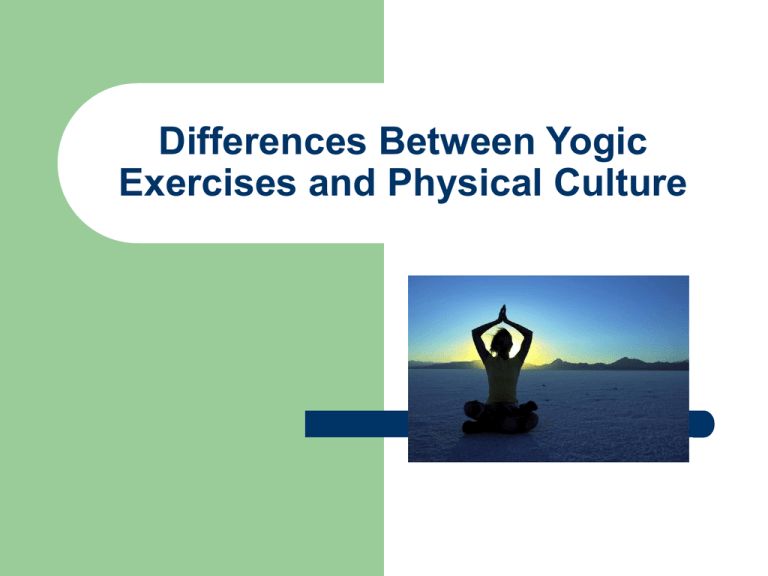
Differences Between Yogic Exercises and Physical Culture Yogic Exercise VS Physical Culture Today, yoga is influencing all sorts of mainstream sports and exercise: Professional basket ball and soccer, dance, aerobics, and running. Let’s look at the principles that have made it an increasingly popular and influential technique changing the way we look at our bodies, minds and ways of exercising. Yogic Exercise VS Physical Culture The fundamental difference is that yoga exercises oppose violent movement, as this causes fatigue, muscle stiffness and injury. Emphasises violent movements of the muscles. This produces large quantities of lactic acid in the muscle fibres, causing fatigue. Yogic Exercise VS Physical Culture Regards physical body as an instrument for the journey to perfection. Designed to develop muscles for a stylish body. Yogic Exercise VS Physical Culture Designed to develop mental facilities and concentration. Can overlook the nurturing of the mind and increase adrenaline. Yogic Exercise VS Physical Culture Muscular development does not necessarily mean a healthy body. Health is the state of body when all organs function perfectly under the intelligent control of the mind. A strong body is necessary to undergo abuse. If the mind is not in control, this short term health gives license to indulge in an unhealthy, life-style. (abuse of steroids, etc.) Yogic Exercise VS Physical Culture The stretching of muscles forces blood through the valves of the veins; inverted postures use gravity to force the blood back to the heart. All this strengthens and stretches the heart and increases the volume of blood circulated. Relies solely on aerobic exercise to increase heart pumping and thereby circulation. This produces tremendous strain on the heart. Yogic Exercise VS Physical Culture Muscle fatigue is counteracted through proper breathing and relaxation. Violent movements exceed the muscle and circulation limits, causing fatigue. Yogic Exercise VS Physical Culture Relaxation is done systematically to pay off oxygen debt resulting form build up of lactic acid in the system. When attention is not paid to warming and stretching and cooling and relaxing muscles, violent movement can damage muscles, causing long term stiffness. Though injuries may pass when young, they often return when older. Yogic Exercise VS Physical Culture While yoga is considered a healthy practice for all, it is not the only path. These are just points of why yoga is considered to be a healthy practice and sometimes, an alternative to ‘normal’ or ‘traditional’ forms of exercising.




